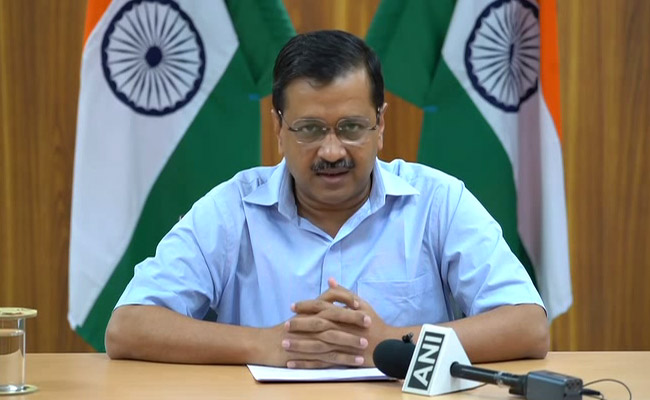LAC heats up as India, China take diplomatic route
Both Chinese and Indian armies are on high alert at the forward locations where tensions and skirmishes took place. The matter has escalated as it could not be resolved by the armies at local level and talks have initiated diplomatically.
By IANS | Updated: May 23, 2020, 05.27 PM IST
AFP
"Within a week, the matter will be resolved. Diplomatic talks are on... Indian Army has deployed forces across the Line of Actual Control in its territory and China too has deployed in its territory," said a source privy to the development at the LAC in Ladakh region.
New Delhi: Increased tension between China and India along the Line of Actual Control (LAC) has forced both the countries militaries to increase deployment of men in thousands and assets at forward locations within their respective territories.
Both Chinese and Indian armies are on high alert at the forward locations where tensions and skirmishes took place.
ADVERTISEMENT
Indian military has clarified that they will not allow any kind of Chinese transgression in its territory and have improved patrol in those areas. Chinese People's Liberation Army (PLA) has been clashing with Indian Armed forces on patrol by entering into the Indian side.
The matter has escalated as it could not be resolved by the armies at local level and talks have initiated diplomatically.
ADVERTISEMENT
"Within a week, the matter will be resolved. Diplomatic talks are on... Indian Army has deployed forces across the Line of Actual Control in its territory and China too has deployed in its territory," said a source privy to the development at the LAC in Ladakh region.
Sources said that China starts transgression during summer and this is an every year phenomena. Indian soldiers push China forces back.
ADVERTISEMENT
Increased deployment
Chinese People's Liberation Army (PLA) has erected a sizeable number of tents in the Galwan Valley of the Union Territory of Ladakh, the area where showdown started in 1962 leading to a war. China has also increased boats with armed personnel in Pangong Tso (lake).
Sources said that they have deployed thousands of men across LAC and they are putting in those tents.
ADVERTISEMENT
Indian Army Chief Visit
Indian Army chief General Manoj Mukund Naravane on Friday visited Leh, the headquarters of 14 Corps in Ladakh, and reviewed security deployment of forces along Line of Actual Control with China.
He held a meeting with Northern Command (NC) chief Lieutenant General Y.K. Joshi and the 14 Corps commander Lieutenant General Harinder Singh and other officers to know the ground situation at forward locations along the LAC. Later in the day, he returned to Delhi.
His visit came after India rejected China's allegation that Indian troops initiated tensions and crossed Line of Actual Control in Ladakh and Sikkim sectors.
Why face-off
It all started after Chinese Army unnecessarily started opposing the a critical road construction project north of Pangong Tso. India has constructed the road on its side of Line of Actual Control to which China forces started opposing and then suddenly increased deployment over the region. It led to face-off, after which Indian forces also increased deployment.
The Indian forces stand was very clear that like the China has built a road in the area under their control, Indian is also doing so.
Earlier this month, Chinese and Indian soldiers had a face-off near Naku La Pass in Sikkim and Pangong Tso in Ladakh. In both the incidents, soldiers from both sides sustained injuries.
Thereafter tension led to increased deployment of forces along the Line of Actual Control.
Line of Actual Control
The India-China border is not fully demarcated. Also the Line of Actual Control is not clarified. Further mutual exchange of maps between India and China about their respective perceptions has not taken place. This has led to different perceptions of the LAC for the two sides.
Indian Army chief had also said that temporary face-offs do occur along the Line of Actual Control (LAC) with China due to the differing perceptions of the alignment of boundaries.
In a statement on May 14, Naravane said, "Temporary and short duration face-offs between border guarding troops do occur along the LAC due to the differing perceptions of the alignment of boundaries which are not resolved."
He said that there were two incidents at Eastern Ladakh and North Sikkim where aggressive behaviour by both sides resulted in minor injuries to troops after which both sides disengaged after dialogue and interaction at the local level.
"It is reiterated that both these incidents are neither co-related, nor do they have any connection with other global or local activities," Naravane said.
China's allegations
Earlier this week, Chinese Ministry of Foreign Affairs claimed that "the Indian army has crossed the line across the western section of the Sino-Indian border and the Sikkim section to enter Chinese territory".
The statement added that the Chinese side had taken up the matter with India, asking the Indian side to "immediately withdraw the personnel across the line, restore the status quo of the relevant areas, strictly restrict the frontline troops, observe the important consensus reached by the leaders of the two countries and the agreements signed by the two sides, and jointly maintain peace and stability in the border areas".
India warns China
On Thursday, the Indian government denied China's claims that India is carrying out any activity in violation of the Line of Actual Control in Ladakh and Sikkim.
"Any suggestion that Indian troops had undertaken activity across the LAC in the Western Sector or the Sikkim sector is not accurate," the spokesperson of the Ministry of External Affairs, Anurag Srivastava said.
All Indian activities, he said, "are entirely on the Indian side of the LAC. In fact, it is Chinese side that has recently undertaken activity hindering India's normal patrolling patterns".
The spokesperson said that Indian troops are fully familiar with the alignment of the Line of Actual Control in the India-China border areas and abide by it scrupulously.
The Indian side has always taken a very responsible approach towards border management, Srivastava said, adding that the government at the same time, is deeply committed to ensuring India's sovereignty and security.
The Indian troops strictly follow the procedures laid down in various bilateral agreements and protocols to resolve any situations which may arise due to difference in the perception of the LAC, he had stated.

 www.ndtv.com
www.ndtv.com



 the last time USN had 6 active CBG was 1990 Gulf war
the last time USN had 6 active CBG was 1990 Gulf war